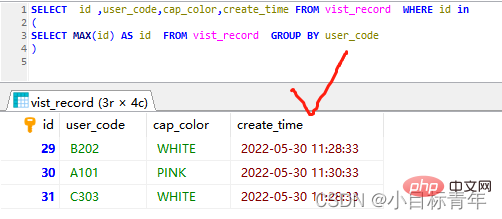Home >Database >Mysql Tutorial >MySql example detailed explanation: how to find the latest data row that meets the conditions
MySql example detailed explanation: how to find the latest data row that meets the conditions
- WBOYWBOYWBOYWBOYWBOYWBOYWBOYWBOYWBOYWBOYWBOYWBOYWBforward
- 2022-07-08 14:59:492180browse
This article brings you relevant knowledge about mysql, which mainly organizes the related issues of how to find the latest data rows that meet the conditions. In daily business, what often needs to be checked What is the latest piece of data? As for the concept of latest, for products, it is often said that it is in chronological order, and latest means the latest. Let’s take a look at it together. I hope it will be helpful to everyone.

Recommended learning: mysql video tutorial
When doing business, you often need to check the latest piece of data.
As for the concept of latest, for products, we often talk about chronological order, and latest means the most recent.
Combined example:
This is a record sheet recording people’s visits.
The data in the data table accurately records the color of the hat that each person wore when visiting, the time, and the person code (unique for each person). 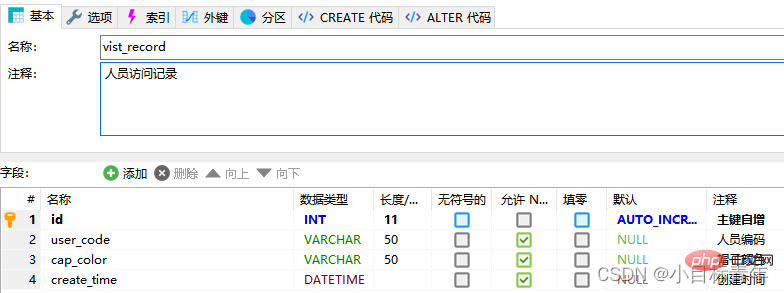
Data sample:
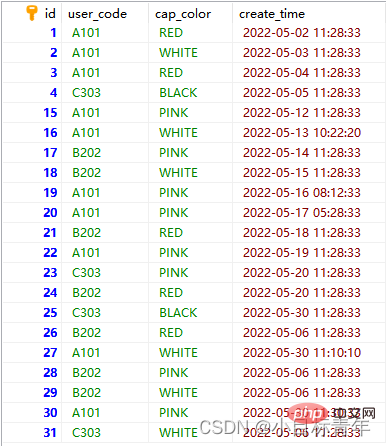
What needs to be done is:
Come up with the latest data that meets the conditions Visit records.
What would you do best?
Let’s implement something first, take out the latest visit record of the person code A101.
First show the wrong sql example: taking the max() function for granted.
SELECT MAX(id) AS id ,user_code,cap_color,create_time FROM vist_record WHERE user_code='A101' ;
Query results (wrong results) :
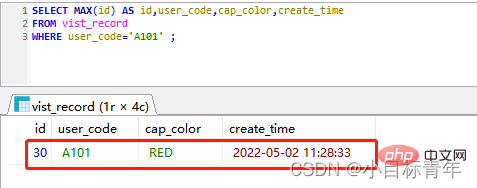
Obviously the data appears to be correct at first sight, but it is actually wrong.
Why is it wrong? You can tell me a little bit, since some people are interested in the comment area (brothers are welcome to express their opinions).
Simple description, max is an aggregate function. Our error example is not used with group by. In fact, only mysql can let us execute it at this time, and many databases directly report errors.
Then the execution is executed. In fact, at this time, MySQL is equivalent to treating the entire table as a content block to perform a compressed retrieval.
We added the where condition user_code='A101', so the entire content block does filter out other data that is not user_code='A101'.
In other words, under this kind of lax execution, mysql guarantees that max returns the maximum value (relevant column), but it is not guaranteed for other column fields.
The correct data is:
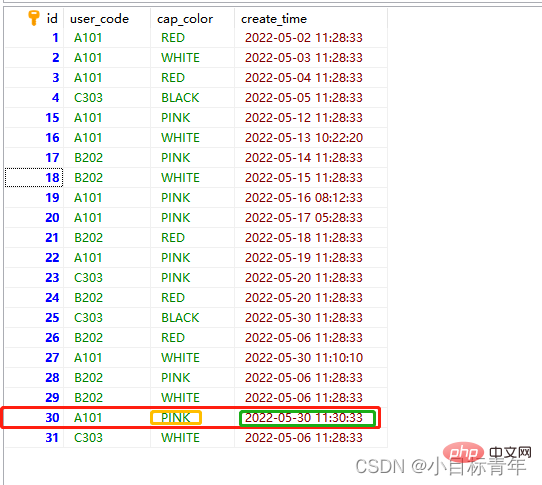
Is max(id) unusable?
Correct usage (use the maximum id value that meets the conditions as a condition):
SELECT
id,user_code,cap_color,create_time
FROM vist_record
WHERE id IN (SELECT MAX(id) AS id FROM vist_record WHERE user_code='A101' )
Query results: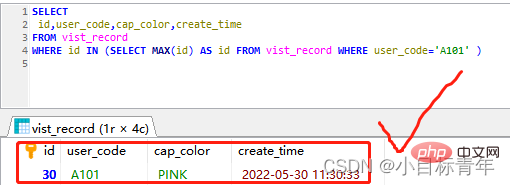
But I saw the above use With this method of subquery,
everyone must have been secretly cursing, is it so troublesome to get the latest data?
Is there anything simpler?
have.
For example, we have determined that the id is auto-incrementing, and the data with the largest id (data that meets the conditions) is the latest.
Then we can use reverse order DESC to get the latest data:
DESC is reverse order/descending order.
PS: 
Use reverse search:
SELECT *
FROM vist_record
WHERE user_code='A101'
ORDER BY id DESC
LIMIT 1;
Query results:
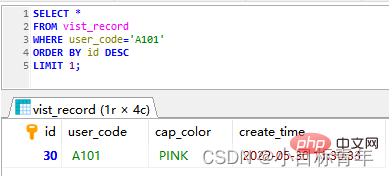
Or in reverse order of time:
SELECT *
FROM vist_record
WHERE user_code='A101'
ORDER BY create_time DESC
LIMIT 1;
Query results:
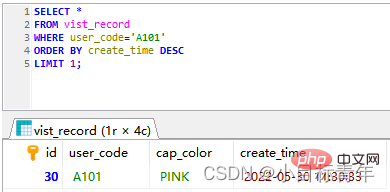
Is it that simple to achieve?
So what if what we need is not to specify A101 but the latest data of everyone involved?
That is, there are multiple groups of concepts.
The latest data that meets the conditions for each category
The orange boxes are the latest records of A101, B202, and C303, which we want to take out.
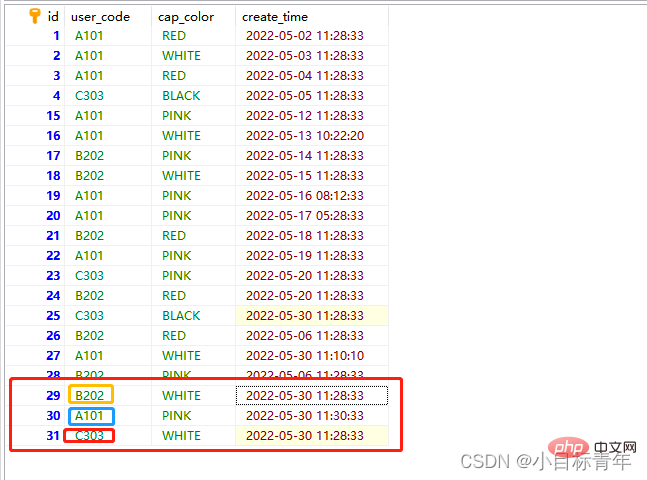
Error example:
SELECT MAX(id) AS id ,user_code,cap_color,create_time FROM vist_record GROUP BY user_code
Wrong filter result:

Correct encoding:
SELECT id,user_code,cap_color,create_time FROM vist_record WHERE id in
(
SELECT MAX(id) AS id FROM vist_record GROUP BY user_code
)
Recommended learning:mysql video tutorial
The above is the detailed content of MySql example detailed explanation: how to find the latest data row that meets the conditions. For more information, please follow other related articles on the PHP Chinese website!
Related articles
See more- What should I do if mysql cannot connect remotely?
- How to delete foreign key relationship in mysql
- Summarize and organize MySQL semi-synchronous replication configuration
- In-depth analysis of the query optimizer in MySQL (detailed explanation of working principle)
- An article to talk about the auto-incrementing primary key in MySQL


